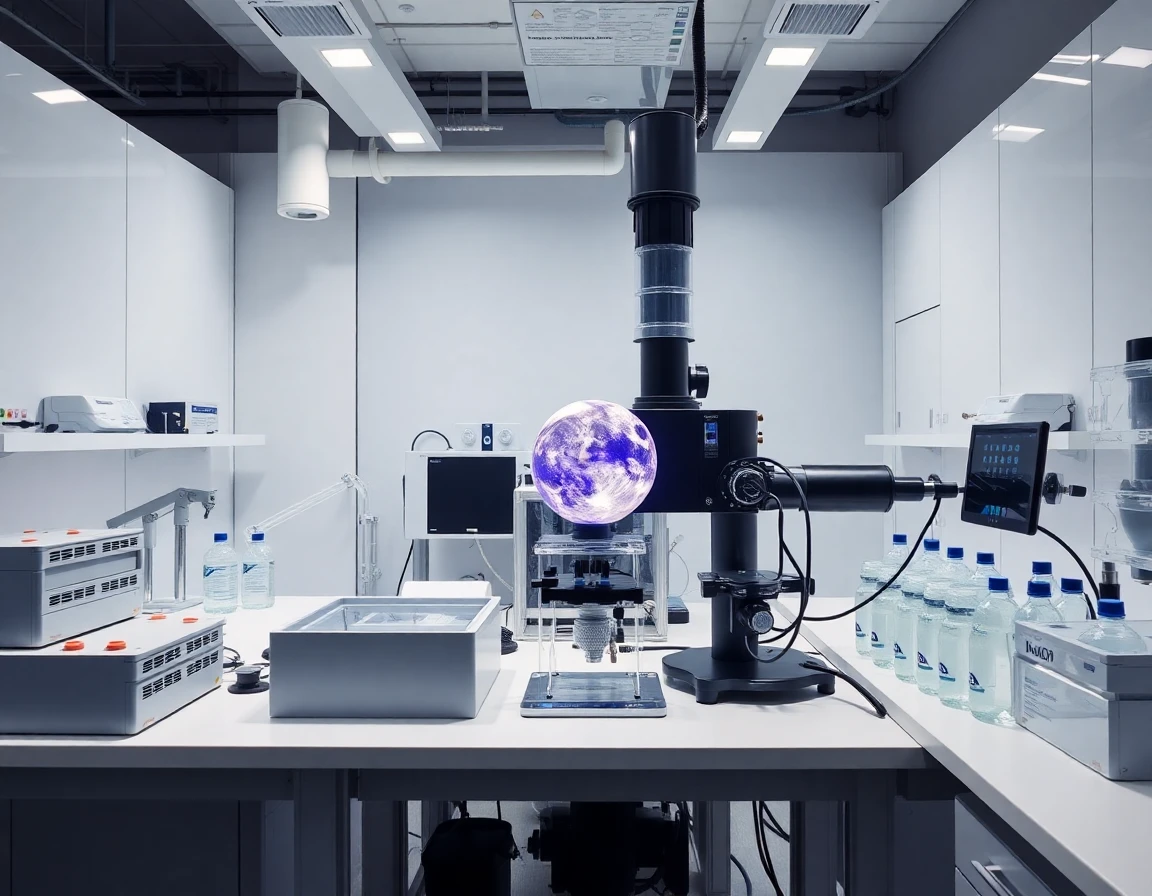The New Frontier: Lunar Mining
As humanity’s ambitions stretch beyond Earth, lunar mining has emerged as a key area of interest within the aerospace and defense sectors. With the Moon’s rich deposits of resources like helium-3, rare earth elements, and even water ice, current research is increasingly focusing on the technical and economic feasibility of extracting these resources. This article explores the latest developments in lunar mining, its implications for space exploration, and the technologies that could make it a reality.
Understanding Lunar Resources
The Moon is believed to harbor a variety of valuable resources that could be instrumental for both terrestrial and extraterrestrial applications. Among these, helium-3, a potential fuel for future fusion reactors, is particularly appealing. According to a 2022 report by the European Space Agency, there are estimated to be over one million metric tons of helium-3 on the lunar surface, which could provide energy for millions of homes on Earth for centuries.
Additionally, water ice found in permanently shadowed craters is critical for sustaining human presence on the Moon and could be transformed into hydrogen and oxygen, propelling future spacecraft. As Dr. Emily Chen, a space resource expert at NASA, states, “Water on the Moon not only supports life but also serves as a powerful propellant for deep space missions.”
Current Research and Technological Innovations
The feasibility of lunar mining hinges on advancements in robotics, automation, and in-situ resource utilization (ISRU) technologies. Companies like Astrobotic and Intuitive Machines are leading the charge with their lunar landers and rovers designed for resource extraction. Astrobotic’s Peregrine lander, for example, is set to deliver payloads to the lunar surface, paving the way for future mining operations.
Moreover, NASA’s Artemis program aims to establish a sustainable presence on the Moon by the end of the decade, which includes developing technologies for lunar mining. The Lunar Gateway, a space station orbiting the Moon, will serve as a hub for research and operations in this field. As Dr. James Anderson, a senior engineer at NASA, notes, “The Gateway will facilitate not only lunar mining but also support missions to Mars and beyond. It’s a pivotal component of our lunar strategy.”
Economic Viability of Lunar Mining
While the technical challenges are significant, economic considerations also play a crucial role in the future of lunar mining. Initial estimates suggest that the cost of launching and operating lunar missions can reach billions of dollars. However, as launch costs decrease—thanks in part to the emergence of reusable rocket technologies like SpaceX’s Falcon 9—the economic landscape is shifting.
A study from the Lunar Mining Coalition indicates that if helium-3 can be successfully mined and returned to Earth, it could generate revenues exceeding $1 trillion. This staggering figure highlights the potential profitability of lunar mining, making it an attractive venture for both public and private sectors.
Regulatory and Ethical Considerations
As lunar mining becomes more feasible, regulatory frameworks will need to adapt to address ownership and resource rights on celestial bodies. The Outer Space Treaty of 1967 states that no nation can claim sovereignty over the Moon, complicating the legality of mining operations. Experts like Dr. Susan Ramirez, an international space law scholar, argue that new treaties may be necessary. “As we venture into lunar mining, we must have clear international agreements in place to govern resource extraction and ensure that it benefits all of humanity.”
Future Developments and Impacts
The implications of successful lunar mining are profound. Beyond economic benefits, it could lead to advancements in technology and materials science. The extraction of rare earth elements could also reduce Earth’s dependency on foreign sources, contributing to national security and economic stability.
Moreover, lunar mining may act as a stepping stone for deeper space exploration. The resources gathered could support long-term human settlement on the Moon, serve as a launch point for missions to Mars, and even facilitate asteroid mining in the future.
Conclusion
Lunar mining stands at the intersection of technology, economy, and exploration. As research progresses and technologies mature, the dream of harvesting resources from the Moon may soon become a reality. With collaboration between governments and private enterprises, the next decade could witness significant strides in this exciting frontier of space exploration. As Dr. Chen aptly summarizes, “Lunar mining is not just about resources; it’s about expanding our horizons and our understanding of what is possible.”
In this era of renewed interest in lunar exploration, the world watches closely as we prepare to unlock the Moon’s treasures.
Related Technologies and Products
- Astrobotic’s Peregrine Lander: A spacecraft designed to deliver payloads to the Moon.
- NASA’s Artemis Program: A series of missions aimed at establishing a sustainable human presence on the Moon.
- SpaceX’s Falcon 9: A reusable rocket significantly lowering the cost of satellite launches and space missions.
By staying updated on lunar mining developments, stakeholders can better navigate this evolving landscape, positioning themselves at the forefront of the next great leap in human exploration.



